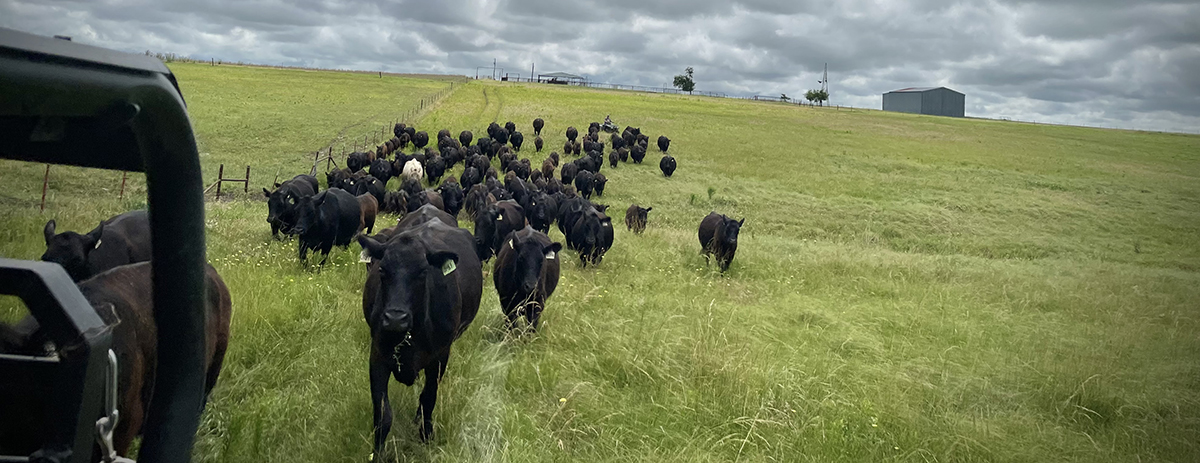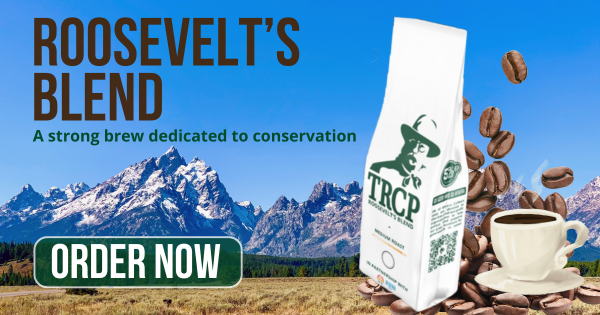A second-generation Texas ranch owner shares the real-world impact of climate change on her land and how she has taken action to be part of the solution
Meredith Ellis is a second-generation rancher in Rosston, Texas, a small agricultural community in the northeast part of the state. Working ranches are an incredibly important part of the fabric of wildlife habitat connectivity woven between public and private lands in America, and responsible grazing practices benefit huntable species in many ways. Ellis is part of a new generation of ranchers who are also thinking about their contributions to climate resilience and how certain agricultural practices can boost carbon storage and soil quality while benefiting their businesses. This is powerful motivation, because—like hunters and anglers—ranchers are out on the land every day, on the front lines of climate change, seeing how it is already impacting our natural world.
Here is Meredith’s story of witnessing those effects and taking action.

As a rancher, my job requires that I am outdoors every day, and one of the most satisfying aspects of this is seeing how animals use and provide a benefit to our grazing lands. I have documented over 500 species, including 91 different species of birds. Bald eagles roost in one of our pastures in the fall and winter. We also have an elusive river otter family that refuses to be photographed.
I have documented nine different types of milkweed, alone. Milkweed is toxic to cattle, so they do not consume it, but it’s a great example of what native species are giving back to our land. Monarch butterflies rely on milkweed, as most people know. It also contains a deep fibrous taproot that enhances water infiltration and holding capacity in the soil, so that when it rains, milkweed helps to prevent erosion and allows for every drop of water to percolate deep into the ground, making it available during long periods of drought.

Society has historically undervalued grazing lands, despite the important role they play in species conservation, the hydrological cycle, water quality downstream, and carbon sequestration and storage.
The loss of our native grasslands to development reflects this misunderstanding.
Across the U.S. and Canada, around 80 percent of our grasslands have been converted to other uses and about 97 percent of tallgrass prairie, in particular, has been converted. Texas is separated into ecoregions, including the blackland prairie—what was once 12 million acres of pristine grazing land that has now dwindled into just 5,000 acres. A few miles down the road from my ranch, there is a 300-home subdivision going in. What was once a pasture for grazing cattle is now completely paved over.
Then there’s climate change. I grew up on this ranch and was part of growing it from 450 acres to 3,000 acres over the last 40 years, and I’ve noticed a great deal of ephemeral changes occurring over time. I’ve seen very early or very late blooming periods, more severe weather, and heavier sporadic rainfall followed by extensive dry spells.
I’ve seen a monarch butterfly that had clearly begun its migration way too early in the season—it was jumping from spot to spot in search of milkweed that would not grow for another month. I’ve also experienced the terror and heartbreak of the freeze of February 2021, when the temperature in Texas was colder than the north pole. One morning at first light, it was -6 degrees. I bundled up, headed to the barn, and noticed a mockingbird perched on a limb, frozen solid.
Perhaps this is why I feel that it is becoming increasingly necessary to build in climate resilience through land stewardship principles in the face of increasingly devastating weather events. Ranches must be both drought and flood resilient. It is a matter of our national food security.

Growing up on this ranch, I was a tomboy and was rarely indoors. You could usually find me somewhere on the ranch riding my horse and building forts. I attended our small local school and upon graduation, with the know-it-all attitude of an 18-year-old, I was so very ready to get out of here. I wanted to see the world, and I did. I have been to Thailand, Australia, New Zealand, Africa, and beyond.
I eventually found myself at the University of New Mexico in Albuquerque, where I received my bachelor’s in business and a master’s degree in landscape architecture with a focus on sustainability. As far away from ranching as that sounds, it was there that I realized the importance of what my dad was doing back home on our ranch. Through my studies, I learned about urban sprawl, the truncation of migratory patterns and pathways, and became keenly aware of most Americans’ disconnection with where their food comes from—and with nature as a whole.
I headed home with the conviction I needed to learn the skills necessary and continue our ranching operation as the second generation.
Around this time, I also became a mom. As all new moms realize upon holding their newborn, suddenly my life wasn’t just about me anymore—it was about my child and his future. What would this world be like when he was my age? There had been more and more studies about how detrimental the beef industry was for the environment in terms of its carbon footprint. I wouldn’t be able to say I did the best I could for my son’s future knowing I was a contributor to climate change.

So, I jumped at the chance to participate in a new effort to quantify carbon sequestration through land stewardship in agriculture—a part of the Noble Research Institute’s Land Stewardship Program which was a pilot for what is now known as the Ecosystem Services Market Consortium. I shared enormous amounts of data with the ESMC, including our fuel usage, fertilizer usage, rainfall amounts, forested land, grass type, pasture boundaries, and where and when each cow was grazing on our ranch 365 days out of the year etc.
It was an enormous amount of work, but as a result of that process, I received reassuring news: After accounting for the methane our cattle burp, our fuel usage, their grazing impact on the land, and any other element considered a carbon source, and then weighing that against the carbon being sequestered on our operation, initial data modeling indicates that every year on average, we are sequestering a net 2500 tons of CO2 out of the atmosphere. That is the equivalent of taking 551 cars off the road.
This valuable knowledge indicated to me that ranching can either be a cause for good and a climate solution or a detriment to the environment, depending on the day-to-day decisions of the rancher.
The key to our success is how we allow cattle to exist on our land. If you go back hundreds of years and think of how bison migrated across our national grazing lands, you discover a symbiosis between ruminant herds of animals and the grasslands. Grasslands thrive on appropriate disturbance of the landscape, such as trampling dead leaf matter, allowing it to make contact with the ground, turning it to compost and eventually to soil. As ruminant animals move through the landscape, they knock seeds onto the ground, push them into the soil with their hooves, and then fertilize them with their manure.

Through multiyear biodiversity studies comparing grazed versus under-grazed areas of our ranch, the grazed areas are much healthier and vibrant. There is greater biodiversity in these areas, as well.
All of this led me to the conclusion that removing cattle from the landscape was not the answer but allowing cattle to mimic their natural instinctual migratory patterns, just as the bison did hundreds of years ago, was essential. Ultimately, my job as a rancher is to allow my cattle to exist appropriately within the landscape that they co-evolved, acting as a catalyst for land health. To achieve this, I am the ultimate observer, watching my cattle’s interaction with the landscape and knowing when to “migrate” them to the next pasture. It is a knowledge that is science-based but also comes from years of living outside within this landscape with my beloved cows.
I believe the ranching community is embracing these kinds of changes. I am a board member of the Integrity Beef Alliance, which, along with partners, has been awarded $30 million through the U.S. Department of Agriculture climate-smart commodities grant. Funding goes toward not only education and outreach about land stewardship practices but also boosting transparency in the beef industry. We want to set apart climate-smart and conservation-oriented ranchers, like me, from ranchers who aren’t doing right by the environment, and give customers a choice at the supermarket. The program, called Integrity Beef Legacy, is 100-percent producer-led and -developed, and I really think it is going to revolutionize the industry, putting the power back in the hands of the land stewards.
If you’re experiencing the effects of climate change where you hunt and fish, share your story here.
Photos courtesy of Meredith Ellis.







Thank you for all your doing as a rancher and your studies that have been at the for front of the need to let our ranchers and the land they are stewards of continue to be, and be a haven for so many species, and a financial stable livelihood for their efforts.